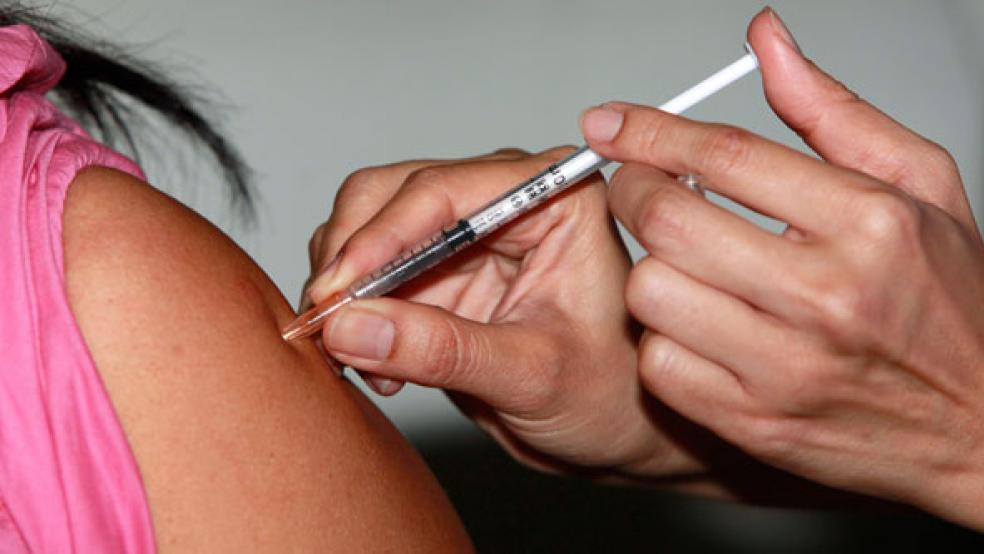Many of the new specialty drugs that have come on the market in recent years have provided breakthrough treatments for seriously ill Americans, even as they have strained the budgets of Medicare and other health insurance programs.
Because many of those drugs for treating cancer, serious eye ailments and other problems are injectable and must be administered in a doctor’s officer or under a physician’s supervision, the added cost is straining patients’ wallets as well as the federal government’s budget.
Related: Medicare Sees Striking Increase in Specialty Drug Costs
A new Government Accountability Office study found that by 2013 Medicare was spending a staggering $20.9 billion a year on doctor-administered drugs, and a quarter of those drugs cost $51,000 to $536,000 per person.
Medicare Part B beneficiaries are financially responsible for covering 20 percent of the cost of their drug treatment. In 2013, roughly 332,000 Medicare participants were required to pay out-of-pocket costs ranging from $1,900 to $107,000 for new drugs.
“The rising cost of prescription drugs is putting heavy financial burdens on families and seniors across the country,” Rep. Chris Van Hollen (D-MD), who requested the GAO study, said in a statement late last week.
“People can live longer, healthier lives thanks to innovative research that leads to effective new drugs,” he said. “But great strides forward in medical science will not be very useful if people cannot afford them. When you are asking people to spend tens of thousands of dollars out of their own pocket to treat diseases like cancer, we have a serious problem.”
Related: Medicare’s Budget Busting $4.5 Billion for Hep-C Drugs
Van Hollen is seeking the seat of retiring Sen. Barbara Mikulski (D-MD). He, like many other 2016 candidates for Congress and president, is making rising prescription drug costs a major issue of his campaign.
The drug industry has come under strong attack from Democratic presidential candidates Hillary Rodham Clinton and Sen. Bernie Sanders of Vermont, among others, for jacking up the prices of both new and older drugs on the market. Congress is likely to address the problem after the 2016 election, especially if the Democrats retain control of the White House.
The federal government could save as much as $541 billion over the coming decade by negotiating for lower drug prices similar to those paid in other industrialized countries, according to 2013 study by the Center for Economic and Policy Research.
However, Medicare was prohibited from negotiating drug prices or establishing lists of covered drugs as part of the landmark Medicare Part D prescription drug program enacted in 2003. Instead, Medicare must pay an amount for drugs based on average sales price plus 6 percent.
Related: As Drug Prices Soar, Doctors Voice Outrage
Drug industry representatives argue that patients are greatly benefitting from the new wonder drugs and that Medicare Part B drugs continue to be a relatively small and stable share of overall Medicare spending. But Democratic lawmakers see it differently.
“I believe we should provide Medicare greater ability to negotiate drug prices,” Van Hollen told The Wall Street Journal last week. “There is a growing concern among the public about prices.”
Joseph Antos, a health care expert with the American Enterprise Institute, cautioned that there are limits to what the government can achieve in terms of achieving drug cost savings, through either negotiations or price controls. One way or another, the pharmaceutical will recover its costs for developing and marketing new drugs, he said.
“There’s certainly no free lunch,” Antos said in an interview Monday. “You can certainly, arbitrarily lower Medicare’s cost, no problem. That doesn’t mean that whatever those costs are the ones that can’t be reduced won’t be paid for by somebody else.”
Related: Clinton proposes $250 monthly cap on prescription drug costs
The GAO study issued last Friday focused on new drugs that were approved by the Food and Drug Administration between 2006 and 2013, often on an expedited basis to bring new cancer treatments into the market.
More than 60 percent of the new drugs approved were classified as “biologics,” or complex molecules that are derived from living sources such as cells. They were covered by Medicare Part B (the program covering doctor care) because they are more likely to be physician administered – meaning injected or infused in the patient. The new drugs also must be carefully handled and stored.
According to the GAO report, the most costly drugs paid for under Medicare Part B in 2013 were for the treatment of serious eye conditions, including a form of macular degeneration. Genentech Inc.’s Lucentis cost Medicare $1.36 billion or $9,426 per beneficiary annually while Regeneron Pharmaceuticals Inc.’s Eylea cost a total of $1.09 billion or $9,936 per beneficiary.
Other top 20 drugs studies were for the treatment of cancer and blood disorders. Those drugs alone accounted for 92 percent of 2013 expenditures on new Part B drugs and for 26 percent of total expenditures for all Part B drugs, according to the GAO.
Related: Extreme Rise in Some Drug Prices Reaches a Tipping
“Total Part B drug expenditures grew at an average annual rate of 4.4 percent from 2007 through 2013, and this growth was driven primarily by new Part B drugs,” the report noted.





